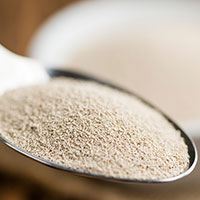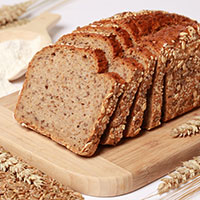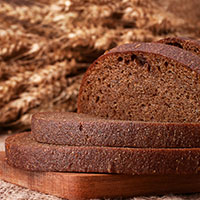| Mineral name |
Chromium |
| What’s it used for? | Regulating carbohydrate metabolism; essential for effective insulin function |
| Best food sources | Brewer’s yeast, yeast products, beef, liver, whole wheat foods, eggs, chicken and legumes |
| How much do I need? | NRV is 40 ug per day* |
| Need to know | The refinement of foods and changing agriculture practices has reduced the level of chromium in foods |
*A Nutrient Reference Value or NRV is the recommended level set by the UK Department of Health for daily nutrient intake
Chromium
Chromium is a trace mineral and an essential part of something called Glucose Tolerance Factor (GTF). GTF is thought to bind the hormone insulin to cell receptors which helps to regulate glucose and blood sugar metabolism. This better explains chromium’s essential role in metabolising carbohydrate from the food we eat.
In essence, chromium helps regulate blood sugar balance, thereby helping prevent the onset of Type ll diabetes, which is unfortunately becoming more prevalent in the UK. This may be due, in part, to the highly refined Western diet naturally containing less chromium.
Why do I need it?
Both chromium and GTF are used to correct blood sugar when it’s out of balance. This function is key in preventing the onset of Type ll diabetes but also helping to control weight. Additionally, better blood sugar balance is associated with sustained energy production.
Chromium’s role in weight loss is key; by increasing the body’s sensitivity to insulin and controlling blood sugar levels, effective fat burning can occur; chromium supplementation has been associated with increased lean body mass.
Sugar cravings, which can often be a problem for people on a weight loss plan, can be reduced by eating more foods containing chromium, together with supplementation, if more support is needed.
Chromium is also useful in conjunction with Vitamin B3 (niacin), which is also part of GTF, in reducing cholesterol levels.
Best food sources
Although Brewer’s yeast is actually the best source of chromium, it’s not eaten in large enough amounts. Therefore, organ meats and wholegrain products tend to be the best sources – further confirmation that the Western refined diet is generally low in chromium
Five foods high in chromium

Brewer’s yeast – 112 ug per 100g

Calf’s liver – 55 ug per 100g

Whole-wheat bread – 42 ug per 100g

Wheat bran – 38 ug per 100g

Rye bread – 30 ug per 100g
Are you getting enough?
Severe deficiency of chromium is rare but even a marginal deficiency may result in problems controlling blood sugar, weight, cravings and fatigue. Tissue levels of chromium tend to decrease with age, plus higher fat intake may also contribute to reduced absorption of chromium.
Did you know?
Chromium is suitable to take during pregnancy and breastfeeding at the recommended levels – consult your healthcare professional for adviceIt is often deficient in the elderly and teenagers due to poor diet
Abnormal cholesterol levels are also a deficiency symptom
Glucose Tolerance Factor (GTF) was first isolated from pork kidney in 1952
For all the latest research on chromium click here
Try this
Chromium is found in the Alive! range of multi vitamins and minerals.
For more information visit www.feelaliveuk.com
You can also follow Alive! on Twitter for general health and wellbeing tips: @feelaliveuk



